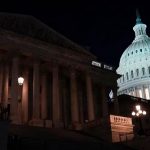Helena, Montana — Montana lawmakers say they won’t participate in a federal food aid program for kids this year due to administrative challenges. Advocates lament that the program would have helped families throughout the summer.
For the 2022-23 school year and summer of 2023, the Montana Department of Public Health and Human Services opted out of P-EBT. Three years ago, the state joined the program.
During the 2020 COVID-19 pandemic, P-EBT was launched. Eligible kids receive SNAP benefits on a card that may be used at grocery retailers.
The U.S. Department of Agriculture program offered free or reduced-price school lunches to pupils whose schools were closed or out due to COVID-19. All school meal-eligible children received P-EBT benefits throughout the summer.
“We know that summer hunger is a very big issue for thousands of Montana children, and it has been for a very long time,” said Jackie Semmens, a policy analyst with the Montana Budget and Policy Center, one of the advocacy groups that called on DPHHS to continue with P-EBT. “The last few years is the first time that the USDA, the federal government, has really addressed the issue of summer hunger in such an effective way.”
Semmens said P-EBT has delivered millions of dollars in aid to the state. She predicted 50,000 Montana kids would receive $120 for summer meals.
DPHHS executives told MTN that P-EBT was intended as a pandemic response, and with the national COVID state of emergency ending this year and no significant school closures, it didn’t make sense to continue the program.
“In addition, the reality is the requirements of the P-EBT program are labor intensive for both school districts and DPHHS,” they said. ‘The program does not follow traditional SNAP processes or rules. Instead, it requires manual processes for data integrity, quality control, and benefits issuance, which is a significant administrative burden for what was meant to be a temporary program.”
DPHHS first declined to engage in P-EBT last year, but they later changed their mind after the federal government gave them more flexibility. Only children under 6 received state subsidies, reducing administrative work.
This year, the federal government permitted states to apply for summer P-EBT without a plan for the previous school year. MTN was told by a DPHHS spokesman that employees would have to identify and distribute assistance to all eligible families, including those unknown to the department. After the public health emergency, DPHHS officials are busy redetermining Medicaid eligibility.
DPHHS said it’s difficult to compare P-EBT usage year to year, but roughly $13 million in benefits remain unspent and some families returned them because they didn’t need them or didn’t understand why they received them.
The Montana Budget and Policy Center and Montana Food Bank Network pushed the state to establish a P-EBT plan because it would reach families more efficiently than school district summer meal programs. “Summer meals are a great option for many families, but there’s lots of drawbacks,” said Semmens. “Kids have to be able to get to where the meal program is – and for parents who are working, it’s hard to take time out of their day to bring kids to the summer meal program. We know that summer meal programs only reach about a third of kids that free and reduced-price school meals do.”
According to the USDA website, 34 states and three U.S. territories have submitted approved plans to participate in P-EBT this summer.



